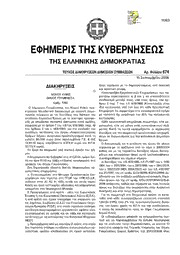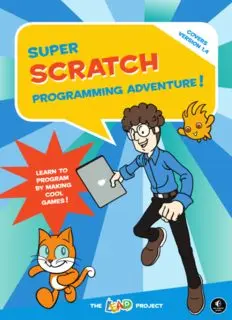
Super Scratch Programming Adventure! Learn to Program By Making Cool Games PDF
Preview Super Scratch Programming Adventure! Learn to Program By Making Cool Games
Super SScc rr aatTcc hh Programming adventure! Learn to Program by Making cool Games! The Project Super Scratch Programming Adventure! Copyright © 2012 by the LEAD Project. Super Scratch Programming Adventure! is a translation of the original Traditional Chinese– language edition, Easy LEAD 創意程式設計 Scratch 遊俠傳 (Easy LEAD: The Scratch Musketeers), ISBN 978-988-18408-2-0, published by the Hong Kong Federation of Youth Groups, © 2010 by the Hong Kong Federation of Youth Groups. All rights reserved. No part of this work may be reproduced or transmitted in any form or by any means, electronic or mechanical, including photocopying, recording, or by any information storage or retrieval system, without the prior written permission of the copyright owner and the publisher. Printed in Canada First printing 15 14 13 12 1 2 3 4 5 6 7 8 9 ISBN-10: 1-59327-409-2 ISBN-13: 978-1-59327-409-2 Publisher: William Pollock Adviser: Dr. Rosanna Wong Yick-ming, DBE, JP Editorial Team: Yolanda Chiu, Alice Lui, Edmond Kim Ping Hui Contributors: Edmond Kim Ping Hui (Book Contents); Man Chun Chow, Chun Hei Tse, Vincent Wong (Assistance & Photography) Interior Design: LOL Design Ltd. Production Editor: Serena Yang Cover Design: Sonia Brown Developmental Editor: Tyler Ortman Technical Reviewer: Michael Smith-Welch Copyeditor: Marilyn Smith Compositor: Riley Hoffman Proofreader: Serena Yang For information on book distributors or translations, please contact No Starch Press, Inc. directly: No Starch Press, Inc. 38 Ringold Street, San Francisco, CA 94103 phone: 415.863.9900; fax: 415.863.9950; info@nostarch.com; http://www.nostarch.com/ Library of Congress Cataloging-in-Publication Data A catalog record of this book is available from the Library of Congress. No Starch Press and the No Starch Press logo are registered trademarks of No Starch Press, Inc. Other product and company names mentioned herein may be the trademarks of their respective owners. Rather than use a trademark symbol with every occurrence of a trademarked name, we are using the names only in an editorial fashion and to the benefit of the trademark owner, with no intention of infringement of the trademark. The information in this book is distributed on an “As Is” basis, without warranty. While every precaution has been taken in the preparation of this work, neither the author nor No Starch Press, Inc. shall have any liability to any person or entity with respect to any loss or damage caused or alleged to be caused directly or indirectly by the information contained in it. All characters in this publication are fictitious, and any resemblance to real persons, living or dead, is purely coincidental. contents Foreword by Professor Mitchel resnick 6 a Note of Thanks from Dr. rosanna Wong Yick-ming 7 a Note for Parents and Educators 8 Meet the cast 14 Stage 1: riding a Flare from the Sun 15 Let’s get to know Scratch! We’ll also learn about sprites and coordinates. Stage 2: Entering Space 27 This is where you’ll make your the first game. You’ll also learn how to create new costumes and program a sprite’s movements, reactions, and sound effects. Stage 3: Trapped by Mona Lisa’s Smile 43 While writing this two-part game, you’ll learn how to control the flow of a Scratch project. You’ll see how to keep score using variables and control the order of the game using broadcasts. Stage 4: Defend hong Kong’s Technocore 53 You’ll learn to control sprites with the mouse, program objects to bounce back, and more. Stage 5: Penalty Kick in Ipanema 63 You’ll program a soccer game with a targeting system, several related rules, interactive sound effects, and a vivid, animated background! Stage 6: Scratchy’s Wild ride 77 You’ll learn how to create a side-scrolling racing game, program complex movements for sprites, and make the game’s background change over time. Stage 7: The Lost Treasures of Giza 97 In this Egyptian adventure, you’ll create an interactive maze with a guard, booby traps, and treasure! Stage 8: Wizard’s race! 111 When you make this simple button-mashing game, you’ll also learn how to play music with Scratch and create an animated background. Stage 9: The Final Fight...in Dark space 123 You’ll need to use all the knowledge you’ve gained while making this exciting fighting game. You’ll create two characters with unique fight moves, custom health counters, and more. Stage 10: Epilogue 143 Bonus Stage 1: Make It, Share It! 147 Bonus Stage 2: Scratch in the real World with the PicoBoard 150 Bonus Stage 3: Online resources 156 closing Thoughts from Edmond Kim Ping hui 158 Foreword Scratch is more than a piece of software. It is part of a broader educational mission. We designed Scratch to help young people prepare for life in today’s fast-changing society. As young people create Scratch projects, they are not just learning how to write computer programs. They are learning to think creatively, reason system- atically, and work collaboratively—essential skills for success and happiness in today’s world. It has been exciting to see all of the creative ways that young people are using Scratch. On the Scratch website (http://scratch .mit.edu/), young people from around the world are sharing a wide variety of creative projects: animated stories, adventure games, interactive tutorials, guided tours, science experiments, online newsletters, and much more. Scratch is a digital sandbox where young people can express themselves creatively—and, in the process, develop as creative thinkers. Super Scratch Programming Adventure! will help introduce more young people to the creative possibilities of Scratch. The book grows out of one of the world’s most innovative and productive Scratch initiatives, organized by the Hong Kong Federation of Youth Groups. I’m delighted that their ideas and activities are now available to teachers, parents, and children around the world. As you read this book, let your imagination run wild. What will you create with Scratch? Enjoy the adventure! Professor Mitchel Resnick Director, MIT Scratch Team MIT Media Lab a Note of Thanks The Hong Kong Federation of Youth Groups created the Learning through Engineering, Art and Design (LEAD) Project in 2005 in collaboration with the MIT Media Lab and the Chinese University of Hong Kong. The LEAD Project promotes hands-on, design-based activities with the creative use of technology and aims to develop an innovative spirit among the youth of Hong Kong. Since its founding, it has promoted technology education on a grand scale, reaching more than 1,000,000 students, parents, and educators. Super Scratch Programming Adventure! is our second of three books about Scratch and the first to be translated into English. This book highlights the playful spirit of learning to program with Scratch, which inspires young people to apply digital technologies in imaginative and innovative ways. We are very grateful to the MIT Media Lab, which has been our partner since LEAD was established in 2005. We are particularly appreciative of Professor Mitchel Resnick and Mr. Michael Smith- Welch, who have always been LEAD’s staunchest supporters and greatest cheerleaders. Because of their unwavering belief in Scratch and in LEAD, you are now able to read this English edition. We hope this book inspires you to design your very own games, projects, and more with Scratch. Dr. Rosanna Wong Yick-ming, DBE, JP Executive Director The Hong Kong Federation of Youth Groups S T N E r a P r S O r F O T E a T O c N u a E D D N a Scratch opens up an exciting world of computer programming for kids and other beginning programmers. The most technical part of using Scratch may actually be installing the program. To follow along with this book, you’ll need Scratch installed on your computer and the project files for the games. • Download Scratch 1.4 from http://scratch.mit.edu/ and fol- low the installation instructions for your operating system. Scratch runs on Windows, Mac, and Linux computers. Try running Scratch to make sure your installation was successful. • Download the projects for this book from http://nostarch .com/scratch/. This online resource includes complete proj- ects, custom sprites, and a short Getting Started With Scratch guide. Place the project files within the Scratch folder so you can find them easily. The Resources file includes two versions of each game in the book. One version is a completely finished and play- able game, perfect for young learners and anyone who wants to build on the games in the book. The second set of projects has no programming added, so that students can follow along with the programming instructions in this book. Remember, there’s no wrong way to play with Scratch! 8 What Is Scratch, anyway? Scratch is a graphical programming language that you can download for free. By simply dragging and dropping colored blocks, you can create interactive stories, games, animation, music, art, and presentations. You can even upload your cre- ations to the Internet to share with others from around the world. Scratch is designed for play, self-learning, and design. Where Did the Name Scratch come From? Scratch is named for the way that hip-hop disc jockeys (DJs) creatively combine pieces of music, using a technique called scratching. In the same way, programmers in Scratch join differ- ent media (images, photos, sound effects, and so on) together in exciting ways to create something entirely new. Who created Scratch? Scratch is a project funded by the US National Science Founda- tion (NSF). It was developed by the Massachusetts Institute of Technology (MIT) Media Lab’s Lifelong Kindergarten Group. Who Is Scratch For? Scratch was developed for young people aged 8 and up to develop creative learning skills for the twenty-first century. When they create programs, they learn important mathematical 9
The list of books you might like

The Subtle Art of Not Giving a F*ck

The 48 Laws of Power

The 5 Second Rule: Transform your Life, Work, and Confidence with Everyday Courage

$100m Offers
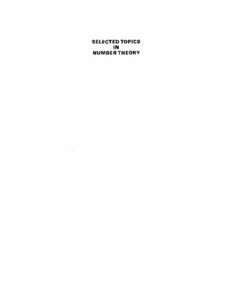
Selected topics in number theory
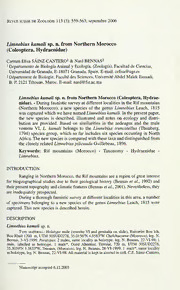
Limnebius kamali sp. n. from Northern Morocco (Coleoptera, Hydraenidae)
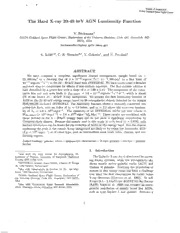
NASA Technical Reports Server (NTRS) 20060013221: The Hard X-ray 20-40 keV AGN Luminosity Function
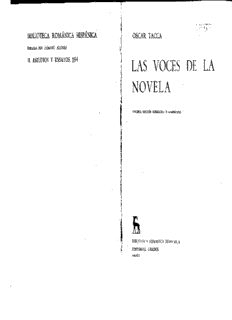
las voces de la novela
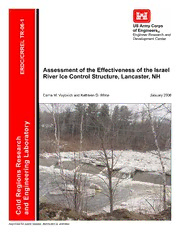
DTIC ADA442900: Assessment of the Effectiveness of the Israel River Ice Control Structure, Lancaster, NH
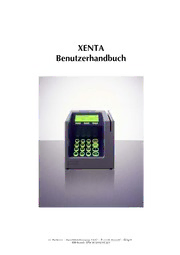
Banksys Xenta Benutzerhandbuch
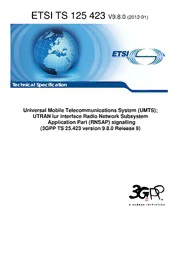
TS 125 423 - V9.8.0 - Universal Mobile Telecommunications System (UMTS); UTRAN Iur interface Radio Network Subsystem Application Part (RNSAP) signalling (3GPP TS 25.423 version 9.8.0 Release 9)
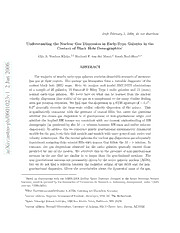
Understanding the Nuclear Gas Dispersion in Early-Type Galaxies in the Context of Black Hole Demographics
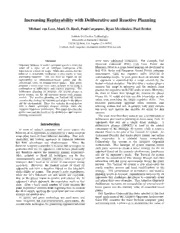
DTIC ADA459203: Increasing Replayability with Deliberative and Reactive Planning

ERIC EJ1066699: Marla Rules

Parent-Infant Psychodynamics: Wild things, Mirrors and Ghosts
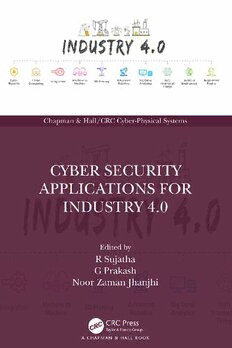
Cyber Security Applications for Industry 4.0
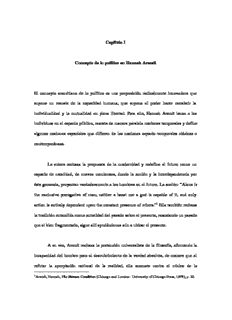
Capítulo 1. Concepto de lo político en Hannah-Arendt
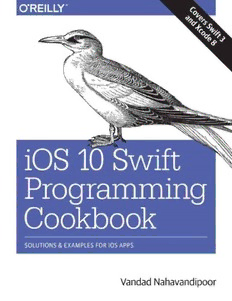
iOS 10 Swift Programming Cookbook
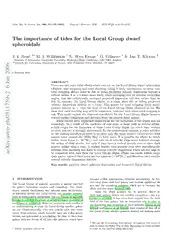
The importance of tides for the Local Group dwarf spheroidals
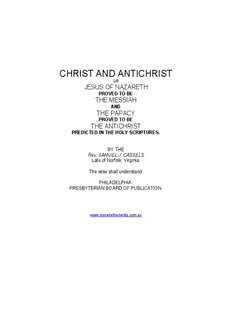
CHRIST AND ANTICHRIST - WordPress.com - Get a Free Blog Here

Death in Summer
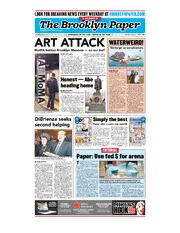
The Brooklyn Paper Volume 32 Issue 05
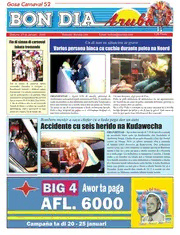
Bon Dia Aruba (23 Januari 2006)
